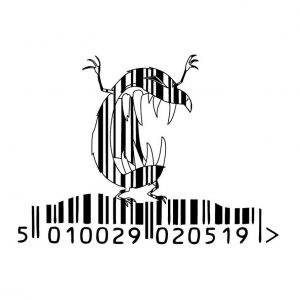Has the time come for your company to upgrade its inventory practices? Your company needs to keep pace with a customer base whose mobile business applications require quicker response times! Isn’t it time your inventory do away with manual processes predicated on trying to avoid data entry errors, errors that are commonplace when individuals must register inventory levels by entering keystrokes into a computer? More importantly, isn’t your company tired of relying upon manual processes such as inventory cards and having to pay warehouse employees for quarterly and year-end manual counting periods? If you’ve answered yes to each of these questions, then it’s time to upgrade your inventory and supply chain management practices. One of the best ways to improve inventory count accuracy is by bar-coding inventory and using bar code scanners that are durable, easy to maintain, have low maintenance costs and dramatically improve operational effectiveness.
Under the right circumstances, bar-coding both your raw material and finished goods can be just another step in upgrading your entire enterprise mobility network. Today’s companies can’t possibly run manual inventory processes and not see higher costs resulting from inefficiencies. These inefficiencies manifest themselves in companies who either purchase too much, not enough or who purchase the wrong parts and raw materials entirely. Just think of the number of data entry errors that occurs yearly, errors that never happen with bar-coding. Now think of the costs of those errors and how these costs can be done away with when your company upgrades to low-cost bar code scanners.
Using a bar code scanner doesn’t only lead to more accurate inventory counts, but it also reduces billing errors and dramatically upgrades the company’s inventory tracking methods. This allows procurement professionals to see when warehouse employees register an incoming shipment with their hand held computer. This immediate update provides time critical information, information that can immediately be transferred to the company’s sales and customer service department. This empowers customer service and sales to be proactive in giving order status updates and on advising customers of possible delays on shipments. However, it doesn’t end there.
It would be wrong to assume that bar-coding is merely the domain of inventory management. Its applications are numerous and its benefits, far-reaching. For instance, manufacturers looking to increase production throughput, not only use bar-coding to better manage inventory, but they’ve come to rely upon barcode scanners to track their production cycle times via work orders. Manufacturers can then track cycle time variances and dramatically improve production efficiencies. They can include barcode scanners at each and every production work station, further improving efficiencies and empowering production employees to barcode inventory usage as well as completed work orders. Bar-coding can be used across the production floor. It can be used to link the company’s entire mobile network so that the company’s field and service technicians are as up to speed as production and warehouse employees.
Bar-coding is that one universal application that can have a profound effect on your company’s operational effectiveness. It reduces the high costs of manual inventory counting methods, reduces the incidence of data entry errors and helps to streamline your entire mobile network into one cohesive tool that employees can use to be proactive, instead of reactive.

